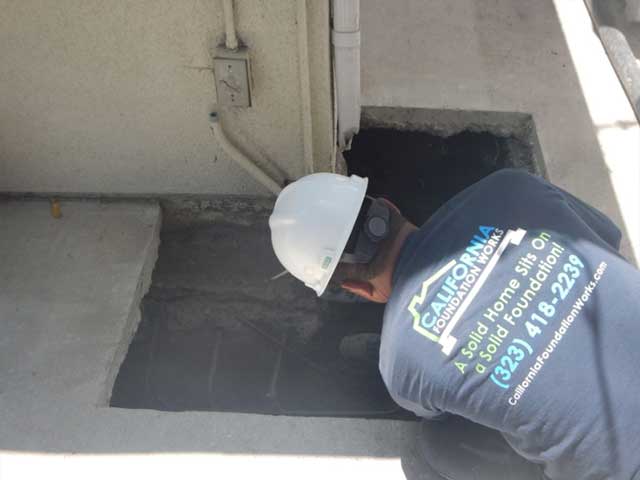
Foundation Underpinning Retrofit with Piers
The foundation of your home is essential in providing the strength and stability of your dwelling. It creates a safe and comfortable space for your family to reside.
However, the foundation can wear over time. Whether it’s due to climate conditions, an old building, or other factors, foundation damage can both jeopardize the occupants and threaten the property value. This is where foundation underpinning can salvage a home.

What is an Underpinning Retrofit?
Foundation underpinning is a repair process that expands a building’s foundation in order to provide stability. Underpinning involves placing a solid foundation below ground level in order to secure the structure of the home.
Related: A Foundation Which Appears Level May Need Repair
How Do I Know My House Needs One?
It’s fairly easy to determine if your home is in need of underpinning. If the foundation of your home is significantly imbalanced, an underpinning retrofit will be needed to restore the structural integrity of the dwelling.
Related: How to Determine if Your Home Needs a Floor Leveling
Piering Process
Foundation underpinning retrofits are achieved through a technique known as piering, a process of installing concrete or steel pilings in the ground in order to support the foundation. This is a large project that requires the use of heavy machinery. There are three types of piers typically used in the process in order to level the foundation.
Related:Pier and Beam Foundation Repair and Leveling
Concrete Piers
Concrete piers are designed for use in highly-compressed areas in order to create a new foundation level. Since the piers are commonly between two and three feet of length, they are often installed via tunneling. Due to their length, concrete piers are known to be a less expensive piering material. However, the lessened cost comes with a catch. Since concrete piers are only driven into the ground in a relatively short way, they will likely shift over time due to soil pressure. Concrete piers should stay in place for up to 20 years, but another foundation retrofit might be needed in the future.
Steel Piers
In contrast, steel piers are a more expensive option that can be driven into the ground all the way down to the bedrock. Steel piers should guarantee a secure foundation for the duration of the home’s life. Steel piers are believed to create a new foundation level in a more effective and permanent way than concrete piers. However, because steel piers are much longer, they will take more time and effort to be installed. Steel piers are the difference between putting a long-term bandaid over a problem and curing it for good.

Helical Piers
The third pier option is helical piers. Like steel piers, helical piers can be drilled up to the bedrock. However, the shape of helical piers sets them apart from the other two options.
Helical piers have ridges on them similar to a screw. This makes them much easier to drill into the ground, and they take up far less space within the ground. For these reasons, helical piers have become to go-to pier choice of many contractors. However, you should always consult a foundation expert before selecting a pier. A professional will evaluate the situation and tell you which choice will be best for your specific repair.
